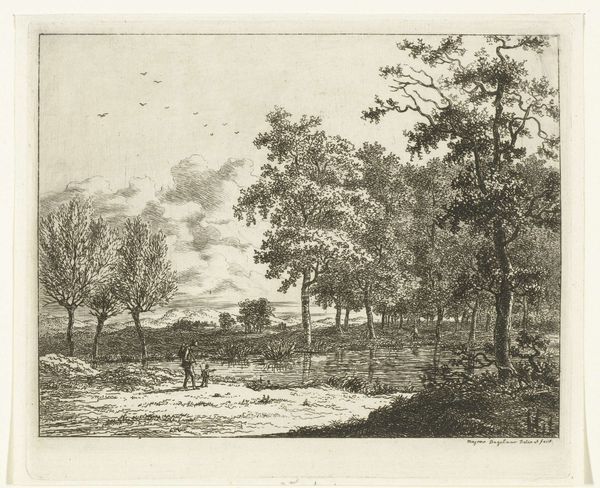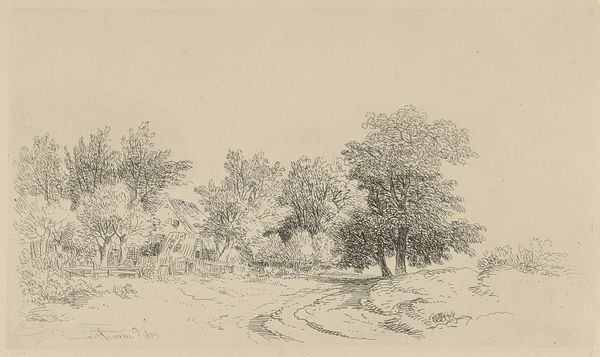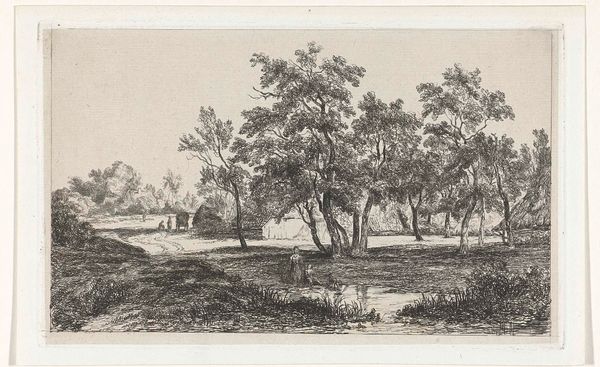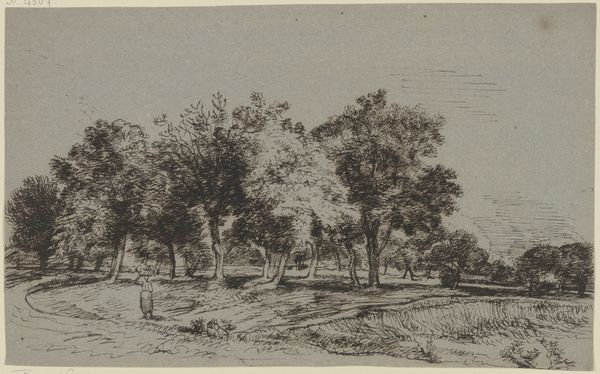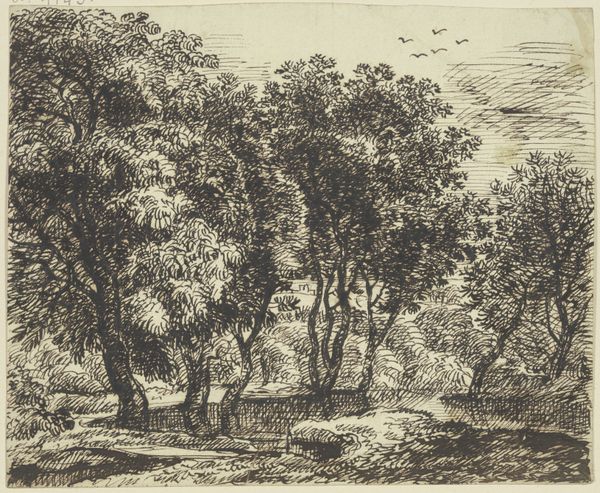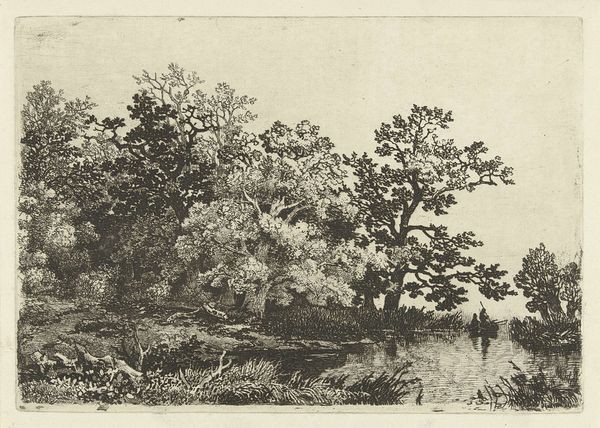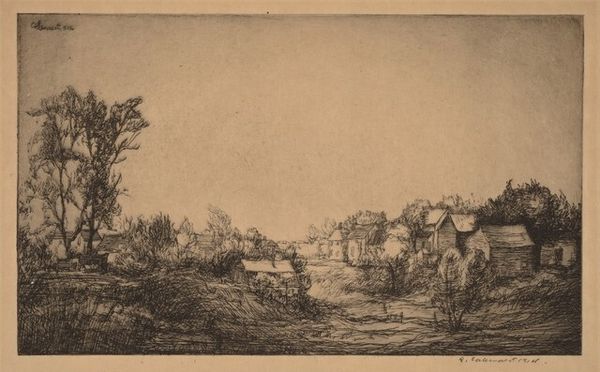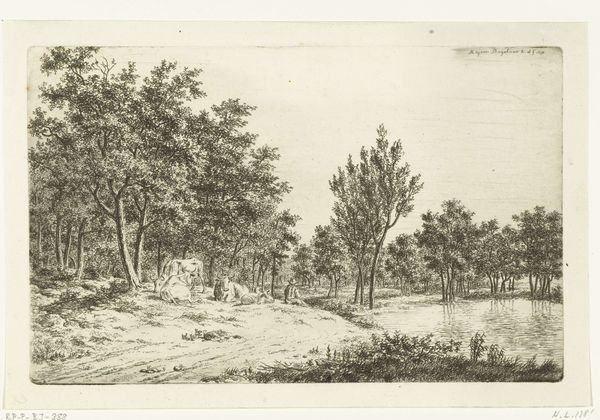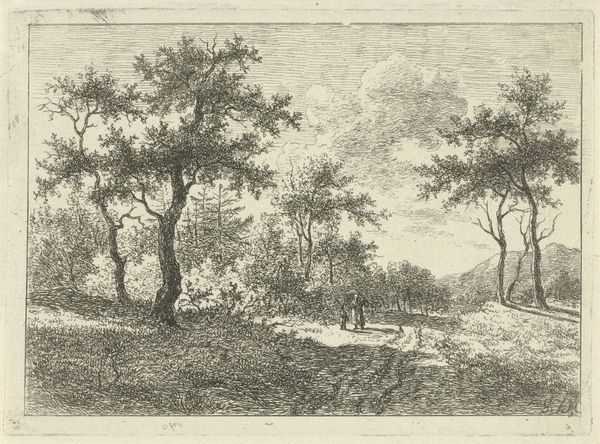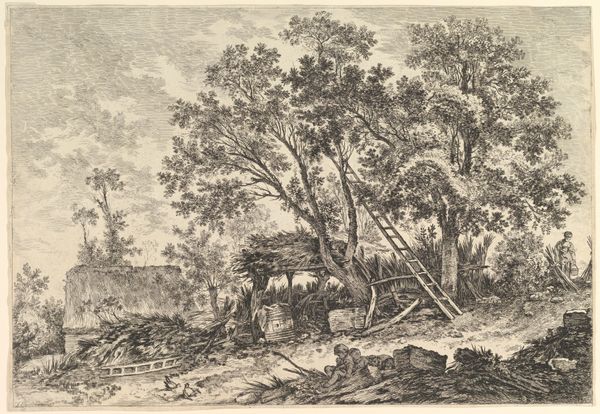
drawing, etching
#
drawing
#
impressionism
#
etching
#
landscape
#
monochrome
Dimensions: 33.7 x 51.1 cm
Copyright: Public domain
Curator: Here we have Charles-François Daubigny's etching from 1877, titled "Apple Trees at Auvers." Editor: It feels… windswept. Stark, even. The starkness comes not only from the monochrome but also from the economy of line. There’s a rawness to the land depicted. Curator: That aligns with what we know of Daubigny’s position in relation to the Impressionists, situating himself between Realism and Impressionism. Think of Courbet and Monet in conversation. How might he see himself fitting into their dialogues about modernity? Editor: I'm immediately drawn to the meticulous craft of etching; consider the copper plate, the biting acid, and Daubigny’s labour to get the density of the textures just right. You can almost feel the cool wind rustling through those apple trees, their branches almost clawing at the sky. Curator: Indeed. And Auvers, later immortalized by Van Gogh, became a refuge for artists seeking authenticity. This particular depiction feels pregnant with meaning given its location, its visuality laden with impressions about gendered rural labour and class. Who were the workers cultivating this landscape, what were the material realities of the community and place? Editor: I’m intrigued by your intersectional reading of it, as those implications weren't my first read on the landscape, to be honest. Though what I do know about etching, especially in its 19th-century forms, is its democratizing force— suddenly allowing for broader reproduction and distribution of images than painting permitted. Daubigny can, quite literally, enter more homes and lives than ever before. Curator: Absolutely. Think of it also within its historical moment. It can speak about nature’s inherent resistance to complete ownership – these landscapes shift and transform, resisting industrial impulses despite capitalist demands of their resource value. Editor: So, while he gives us a snapshot, that snapshot can itself become generative? Curator: Exactly! It reflects an ongoing negotiation. A question rather than an assertion. Editor: Okay, well, thanks, I feel I understand Daubigny's aims—and, importantly, your curatorial process—so much more clearly now. Curator: Likewise. There are many fascinating threads here to pull indeed.
Comments
No comments
Be the first to comment and join the conversation on the ultimate creative platform.

